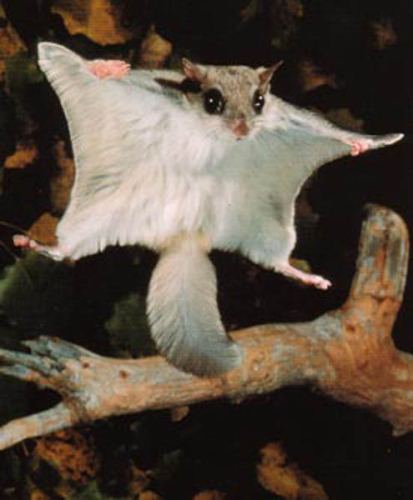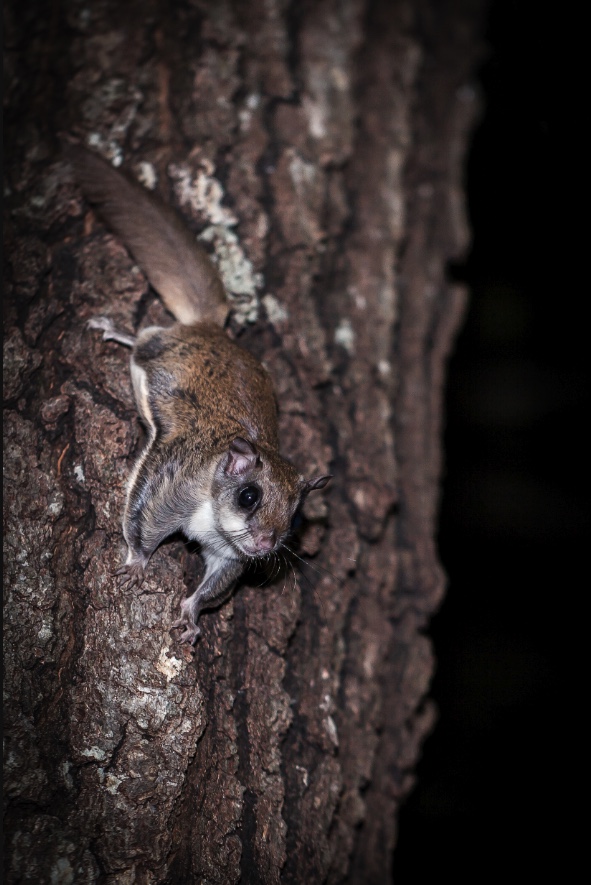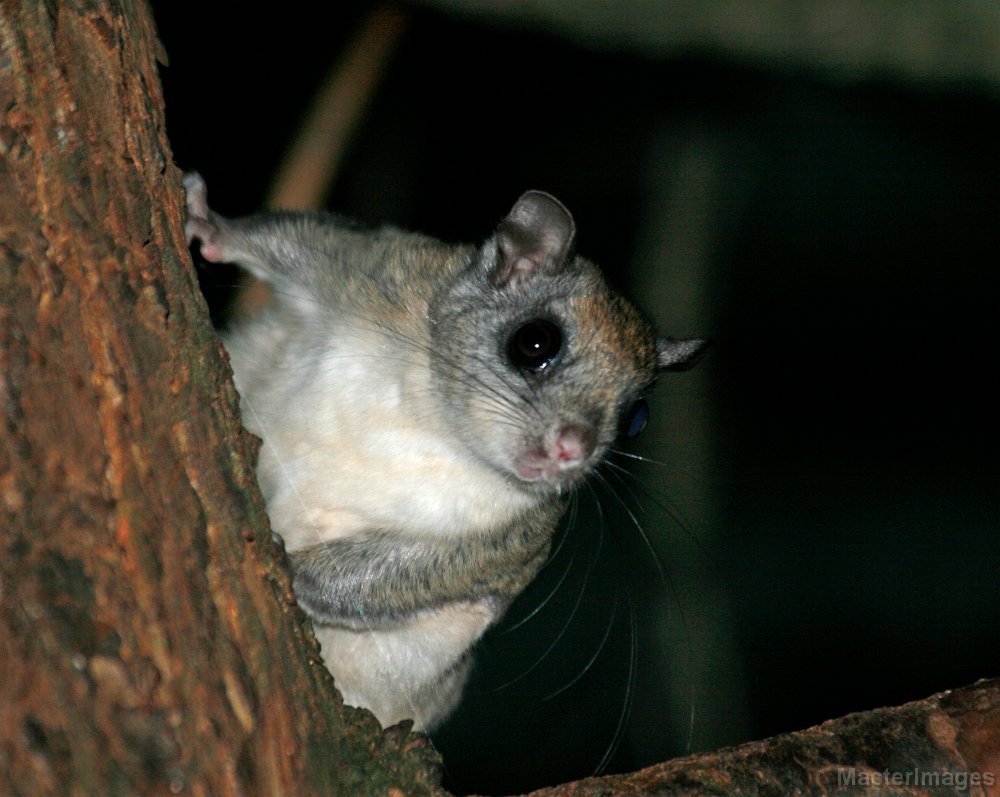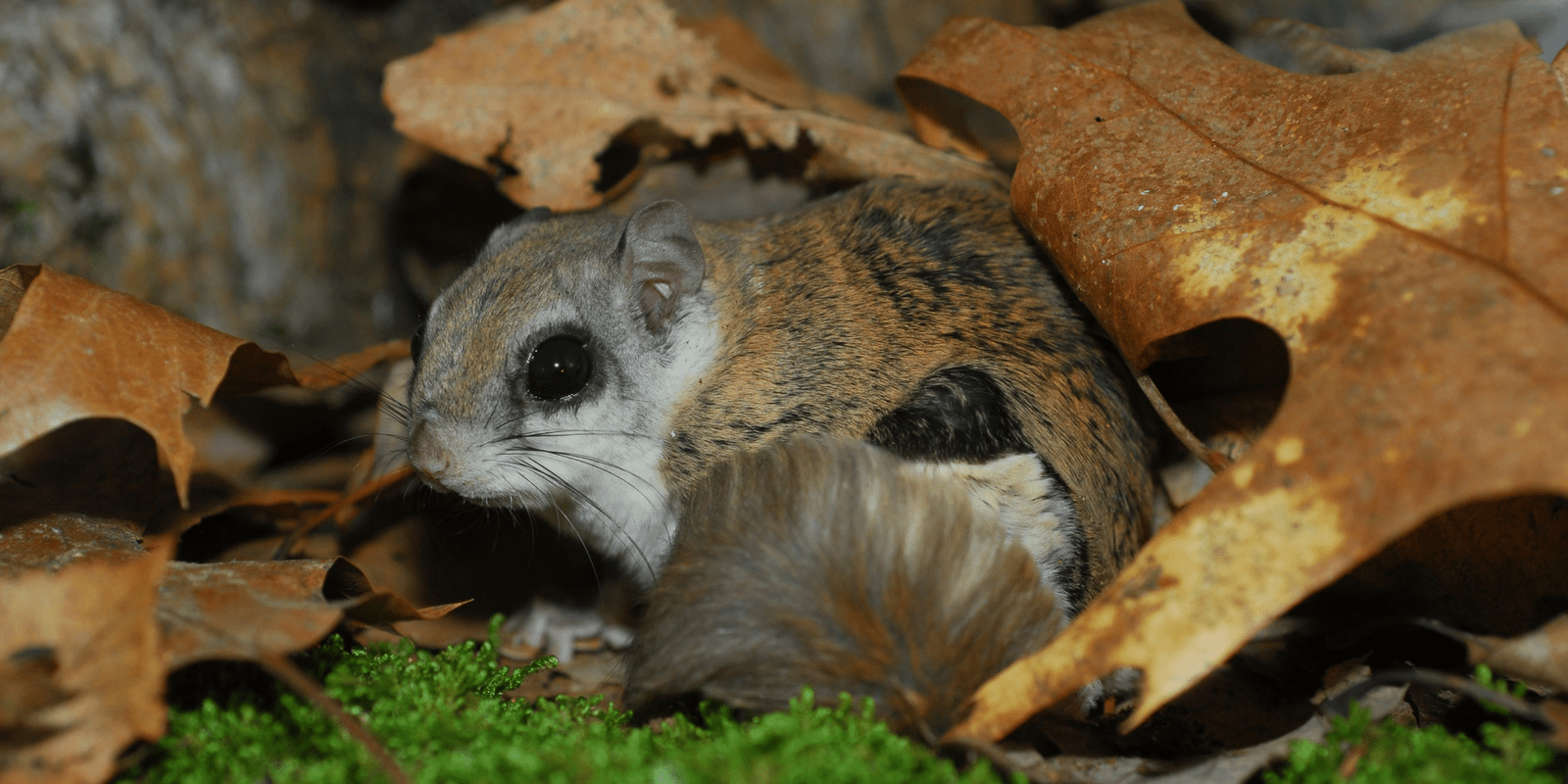
The Northern and Southern Flying Squirrel species in the United States don’t hibernate, but they do snuggle. Flying squirrels don’t hibernate through the winter, but they do slow down their metabolism to conserve resources. They eat a range of foods not just nuts. Flying squirrels are omnivores and eat a range of food including fungi, nuts, berries, seeds, as well as carrion, eggs, slugs, and small birds.

Their enormous eyes help them see in the dark. Being active at night helps them hide from those predators. But their folded patagia prevent them from being as nimble on their feet as non-flying squirrels, which makes them more vulnerable to predators including birds of prey, dogs, and cats. They fly, and stay up at night, to avoid predators. Flying squirrels use their aerial abilities to evade predators, including arboreal snakes. They alight exactly like Batman: They reach toward their landing spot with strong, padded feet that land silently, before their front limbs come down to steady the landing. Their limbs, and their flat rudder-like tail, help them steer and control their leaps. Flying squirrels can also turn nearly 180 degrees in mid-air. “Flights” (which are really glides), of nearly 300 feet (91 meters), have been recorded. They can leap many times their own body length, and can have precision control of their landings. Much like Buzz Lightyear, flying squirrels don’t actually fly they “glide” or fall with style. Flying squirrels have membranes of fur between their arms and legs, called “patagia.” The patagia act as parachutes to slow them in leaps between trees. Here are some of the coolest things about flying squirrels. president and that Soft Cell’s Tainted Love was top of the charts in the UK).Īlthough little is known about the species, like all of its other tree-borne brethren, the Namdapha Flying Squirrel undoubtedly possesses stunning abilities and fascinating habits.

One of our top 25 most wanted lost species, it hasn’t been seen for 37 years, since 1981 (the year Ronald Reagan was sworn in as U.S. In India there is a kind of flying squirrel known only from a lone squirrel collected in the Namdapha National Park in the Eastern Himalayas. Their nocturnal habits make them more difficult to spot than a common squirrel, which can make their conservation particularly difficult the world over. Nocturnal, big-eyed, and tuft-eared, flying squirrels live throughout the world, including in the eastern United States and the northwest coast. However, there’s another type of squirrel a more exotic, arguably cooler cousin that lurks like ninjas in the night: the flying squirrels. Say the word “squirrel” and everyone pictures nearly the same thing: bushy tail, buckteeth, ornery personality, and a propensity for burgling their way into people’s birdfeeders.

Visit this online interactive learning tool, Seeing Through Watchers ’ E yes, to learn the SENĆOŦEN name and other stories about this being! We recommend a desktop computer or laptop for ideal viewing.Global Wildlife Conservation (GWC) changed its name to Re:wild in 2021 Predators include: coyotes, foxes, owls, and hawks. Obvious threats are clear cutting and logging operations in coniferous forests and degradation of habitat through urban development. The young are born from May till June and after eight months of rearing they look just like their parents. Lifecycle & Threatsįemales often have two to five young each year often mating just before the snowmelt in early spring. They use their tail to direct their flight and to stop at the desired location. Their ‘flying’ name is misleading because they do not actually fly rather, they glide from tree to tree traveling up to 73 metres in distance per glide. Like most squirrels, these like to munch on nuts and seeds found in the forest, but these squirrels will also snack on mosses, fungi, and lichens which make up a large portion of their diet. They like to live in old conifer forest which have dead standing trees called ‘snags’ that can house their dens for raising their young. The northern flying squirrel is found throughout Canada, from the Yukon to the eastern provinces as well as regions in northern states. Flying squirrels have long tails for balance when swooping from tree branch to tree branch.

Their fur is silvery grey and toasted brown with a bright white belly and they have large black eyes to see at night. These amazing flying mammals have ‘wings’ (furred skin) that join between their forearms and hindlegs.


 0 kommentar(er)
0 kommentar(er)
